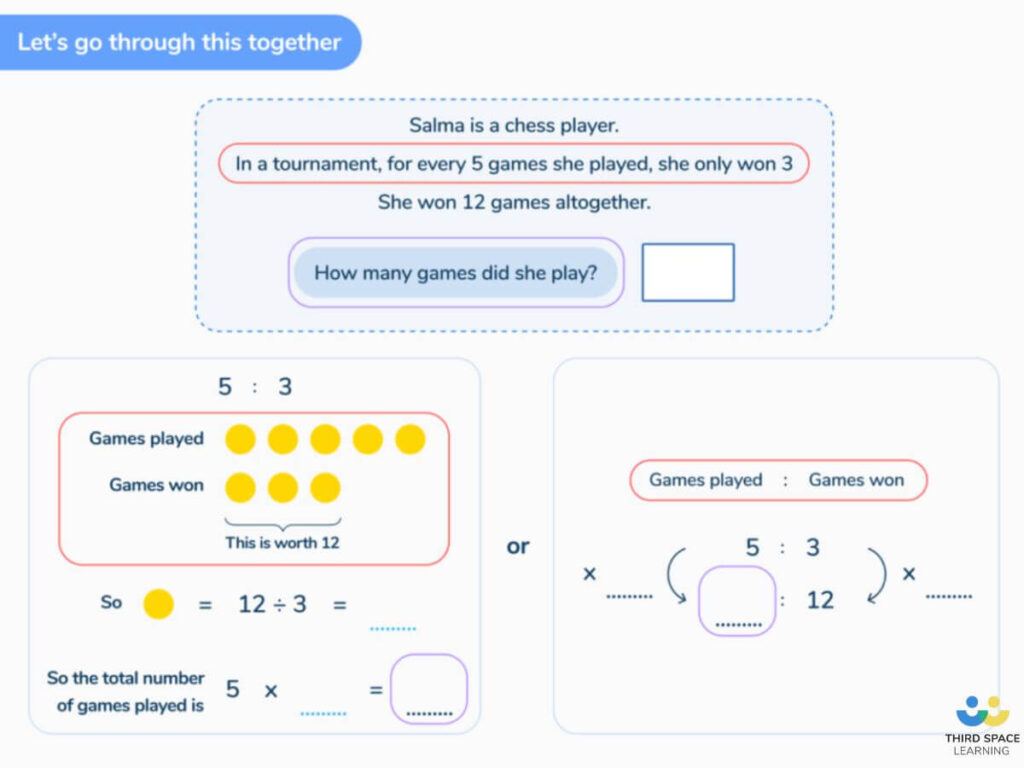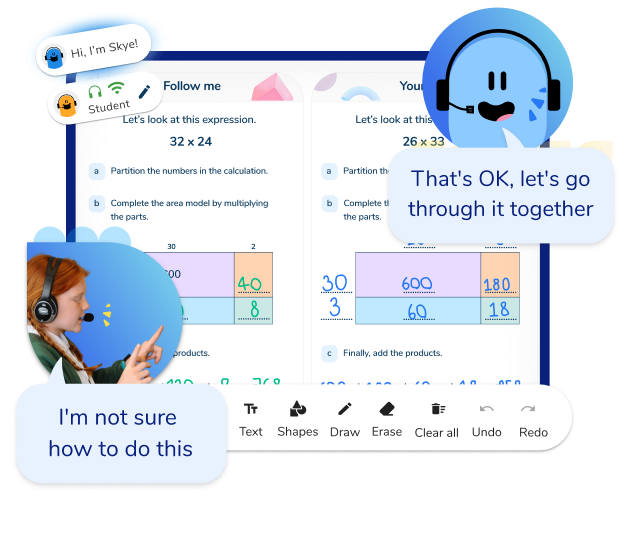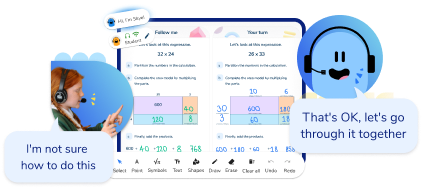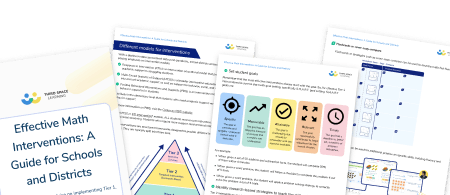Collaborative Lesson Planning As An Effective Professional Development Tool In Mathematics: Develop Teachers And Improve Outcomes
Life in schools is busy. We don’t have endless time to achieve our core purpose of educating the next generation. In order to make the most of the time available, and to facilitate really great teaching, we need our lesson planning to be both effective and efficient.
Collaborative lesson planning is, in my experience, the best route to this.
When done well, it can fulfill our goal of high-quality teaching, improve teacher self-efficacy, and ease teachers’ workload.
And after an extremely tough few years in education, due to the pandemic, it is more essential than ever to protect teachers from burnout and deliver highly effective teaching to the children now back in our classrooms.
Here, I share my own experience of collaborative lesson planning, together with some tips and advice that I hope will inspire you to give it a go in your school.
- What is collaborative lesson planning?
- Why not just share resources?
- It starts with a robust curriculum
- How to run a collaborative planning session
- Benefits of collaborative planning
- How can this sort of lesson planning work for you and your team?
- How to get started with collaborative lesson planning
- Top tips for collaborative lesson planning
High Impact Tutoring Guide for Schools
How to choose, plan and fund the right tutoring approach for your students for maximum impact in your school.
Download Free Now!What is collaborative lesson planning?
Lesson planning is the basis of all good teaching. The first time we teach something new, most of us will create a lesson plan that outlines the key learning objectives for the lesson, the outcomes, resources to use, questions that might arise, misconceptions, and of course, the learning activities we expect students to complete.
Collaborative planning is lesson planning on steroids. Or at least lesson planning with the support and input of colleagues. Collaborative lesson planning gathers all relevant staff together (face-to-face preferably, but online is fine) to plan the subject content and pedagogy that will best provide teachers with the knowledge and skills to deliver an effective lesson. Note that the focus is on the teaching as much as it is on the learning.
Discussions are focused on explanations, mediums of delivery, resources and anticipating misconceptions.
Depending on the frequency of meetings, the focus of any collaborative lesson planning session will be to plan and discuss in-depth the next sequence of lessons, whether that’s for the week, unit or semester ahead.
Why not just share resources?
Collaborative planning does not mean collaborative resourcing, although sharing and developing resources may emerge as a product of pedagogical discussions.
Collaboration should support professional conversations between teachers to develop their subject knowledge, diversify their teaching methods and learn how to use teaching aids effectively.
If planning is resource-driven, it can easily fall into a process of just dividing up the task of resource creation between teachers who then teach from a resource they may not have any ownership of. This stifles creativity and reduces teacher autonomy.
Also, a good resource is no guarantee of an outstanding lesson – an outstanding lesson can be delivered with no resources.
If planning is resource-driven, a common approach is to divide units between teachers. While this can be seen as efficient because a teacher can take time to plan a lesson or unit well and receive many lessons in return, there are some pitfalls with this model:
- Time spent adapting the resource to tailor to your class.
- Time taken to understand what is intended by the resource.
- Significant time invested in that one lesson.
- Risk of some teachers relying on prepared worksheets or handouts and not adapting their teaching resources for their class’ needs.
- Reduced teacher creativity and autonomy.

Meet Skye, the voice-based AI tutor making math success possible for every student.
Built by teachers and math experts, Skye uses the same pedagogy, curriculum and lesson structure as our traditional tutoring.
But, with more flexibility and a low cost, schools can scale online math tutoring to support every student who needs it.
Watch Skye in actionIt starts with a robust curriculum
As you embark upon your collaborative planning process, your math curriculum is the roadmap that will direct your decision making.
So as a first step, you need to ensure you have a robust curriculum in place which has a clear intent, sequences concepts appropriately and is linked to quality resources. Collaborative planning is curriculum-focused and specific to the subject, rather than the more general professional development of skills for teachers, such as embedding Rosenshine’s Principles of Instruction.
How to run a collaborative planning session
Assuming you have your curriculum in place, you’ve scheduled your sessions for the year or semester, and have established the topics to cover at each session, you need to think about how you’re going to run the session itself.
What follows are some step-by-step suggestions to help you start thinking about the logistics of setting up collaborative planning and running your first lesson planning session.
Here, we’re using the example that the goal of your collaborative planning is a series of lessons on ratio for 6th grade.

lesson planning from our Academic Team of ex-teachers
Before the meeting
- Inform attendees of the intended focus of discussions during the meeting. The likelihood is that they would already know about this, as it will be part of the semester plan that feeds into the curriculum plan.
- Give some pointers about what you want to look at to focus the thinking and preparation around this topic. Examples for ratio might be:
- Effective representations of ratio (simplifying, sharing in an amount etc.)
- Common misconceptions students have
- An example of intelligent practice and application for students
- Effective hinge and diagnostic questions
- Ask your colleagues to look at your centralized resources and come prepared with any additional resources they may have.
- Recommend that teachers prepare one aspect of the topic they find challenging to teach and one that they are confident in delivering.
- If you’re the one running the collaborative planning meeting, then take some time to prepare any resources/questions you’ll need during the meeting (see below).
During the meeting: a sample structure
- Start with a rich question for teachers to work on as they arrive. For example:
- 65 sweets can be shared in the ratio of n:(n+1) into two integer parts. How many different ways could you do this?
- How could you adapt the ratio so that solutions are still possible?
- Reflect on the impact of the previous session – what would you keep, lose or amend? Agree on actions to ensure this happens.
- Present a question that encompasses the key concepts for staff to cover and consider how they would represent or deliver the teaching. For example:
- ‘Sarah is planting cabbages and tomatoes in the ratio 2:5. If Sarah plants 45 tomatoes, how many cabbages does she plant?’
- While this might seem like a simple question on the surface, there is a lot to discuss in terms of methods, representations such as manipulatives, bar models and variations of these, as well as the literacy and how challenge and support could be added to this question.
- Think about the prior knowledge required to answer this question, what the previous lesson might have looked like and how you will gauge student understanding at this point.
- Share approaches and identify misconceptions and opportunities for differentiated instruction and work.
- Where appropriate, use additional examples to demonstrate other key learning outcomes and teaching strategies for a successful lesson.
- Summarize the findings of the meeting and any new approaches to the topic if relevant.
- Signpost teachers to where they can find further support (including resources or visual aids).
- Agree on next steps.
- Share the objective and actions for the next session.
Benefits of collaborative planning
Collaborative lesson planning has benefits across the school community – for teachers, leaders and students.
- When leaders create space for developing understanding and for building confidence in concept delivery and structure, teachers’ workload eases.
- Teachers who feel supported with their subject knowledge, resources, and classroom management strategies, will have better self-efficacy and job satisfaction which will itself lead to better teaching.
- With a focus on pedagogy rather than resource creation, collaborative planning positively impacts students transitioning from one grade to another as all teachers have a shared understanding of approaches and methods within classrooms. If, as teachers, we know how a concept has been delivered, it is easier to make links that are relevant to the student and to build on their prior learning.
- Promoting a culture of collaboration boosts team ethos and promotes professional conversations.
- Collaborative planning actively encourages teachers to focus on effective differentiation, anticipate misconceptions, and consider alternative approaches that students may bring to the lesson.
- Leaders can be confident that every student is receiving the same high-quality delivery regardless of which class they are in.
- Teachers feel valued, invested in and secure knowing what is being expected of them in class time.
- Leaders can expect to see consistent high-quality explanations and discussion in lessons, with misconceptions anticipated and addressed.
- Consistency rather than homogeneity is apparent from class to class in the approaches and mathematical language used. The lesson itself is still the responsibility of the teacher and one will still differ from another as is appropriate to the needs of the students in each class.
- Effective teaching is responsive and tailored to the class’ needs and how best to support student learning. Planning discussions based on conceptual understanding facilitates teachers’ skills at doing this.

How can this sort of lesson planning work for you and your team?
It is common for some districts to implement a centralized curriculum which is supported by resources. This means that collaborative planning can truly be focused on pedagogical discussions rather than resource-driven.
Also, it can widen the development beyond your school setting and provide opportunities to share good practice and learn from others through discussion and observation. If collaborative planning is focused on professional development rather than unnecessary, detailed lesson plans, then it should always be built upon a sound scheme of learning which has had attention given to the careful sequencing and effective resources.
How to get started with collaborative lesson planning
- Most importantly – make sure you communicate the benefits well in advance to all participants to ensure their buy-in. Teachers are more likely to engage when they understand the benefits.
- Efforts to save time are important for teachers, so consider when the time will be scheduled for this. It may be during a teachers’ planning period, or as additional or voluntary meetings; you can also use your regularly scheduled professional development time for it.
- As professionals, teachers will be enthused by developing their skills and effectiveness, and communicate how this approach is valued and planned as an investment in their skills.
- Set out the goals for the project and the planning sessions. Some examples of these could be:
- To ensure staff are confident with consistent use of technical language and how this is portrayed to students.
- Agree and develop effective strategies for differentiation.
- Develop effective use of representations with manipulatives and bar models.
- Identify the key constructs for the unit and how teachers can assess that students have attained them.
- Ensure consistency among participants so that each teacher understands the value of their contribution. Draw on teachers’ areas of expertise and experience so that newbie teachers and trainee teachers value their contribution as much as the most experienced.
- Share the responsibility for decisions that come out of the planning meeting making rather than dictated from the top down.
- Share the responsibility for the outcomes.
- Ensure that participants share all resources so they can see the product and outcomes of the project.
- Regularly review the impact of planning lessons collaboratively and adjust where necessary to improve effectiveness.
Top tips for collaborative lesson planning
Hopefully, by now I’ve persuaded you of the benefits and practicalities of collaborative lesson planning, so I’ll finish off with my top tips. These are the things I wish I’d known before I started. Even without them, I was still completely persuaded that all my lesson planning would be collaborative lesson planning from now on!
- Focus on the benefits to teachers early on, and how it will develop them as professionals.
- Start small and engage your core group with shaping subsequent sessions.
- Use your curriculum meeting time effectively. Make sure all participants know the semester’s or annual meeting schedule in advance and ensure all admin is dealt with outside the meeting e.g. by email so that meeting time is focused on the key concepts under discussion.
- Ensure the meetings are well planned to maximize impact and are interactive enough that all teachers can engage and contribute.
- Choosing your concepts is key. Selecting conceptual rich mathematics for staff to tackle boosts the outcomes of the discussions.
- Do the mathematics together as this promotes the opportunity for all to engage and compare methods and see them through the eyes of the students.
- Value engagement by asking staff to share their takeaways and dedicate time in the next meeting for feedback on how it has gone in lessons.
- To support further professional development, you could rotate who leads the session.
- Try to ensure that any resources central to the scheme of learning are editable, as this supports teachers to apply the outcomes of these discussions by adapting them to the needs of their class.
- Long term effectiveness and development of this model relies on staff retention so think about how agreed methods and strategies are documented to support newcomers to the team.
- Make expectations clear about any preparation that teachers are required to do for the meeting while being mindful about purpose and workload.
- Publish the agenda in advance, manage time well in the session and record agreements.
- Think about workspace set-up. Collaboration is more likely to happen organically and become cultural if staff have a shared space to work rather than segregated in their classrooms during their planning period.
That’s it. I urge you to try collaborative planning in your school. You’ll be amazed at the outcomes – for you and your students!
Read more:
- Maths Problems Made Easy
- What is a spiral curriculum? How and When To Implement
- Tips for teacher observations
- A Foolproof Guide To Retrieval Practice
Do you have students who need extra support in math?
Give your students more opportunities to consolidate learning and practice skills through personalized math tutoring with their own dedicated online math tutor.
Each student receives differentiated instruction designed to close their individual learning gaps, and scaffolded learning ensures every student learns at the right pace. Lessons are aligned with your state’s standards and assessments, plus you’ll receive regular reports every step of the way.
Personalized one-on-one math tutoring programs are available for:
– 2nd grade tutoring
– 3rd grade tutoring
– 4th grade tutoring
– 5th grade tutoring
– 6th grade tutoring
– 7th grade tutoring
– 8th grade tutoring
Why not learn more about how it works?
Meet Skye, our AI voice tutor. Built on over a decade of tutoring expertise, Skye uses the same proven pedagogy and curriculum as our traditional tutoring to close learning gaps and accelerate progress. Watch a clip of Skye’s AI math tutoring in action.
The content in this article was originally written by secondary maths teacher Lindsey Ford and has since been revised and adapted for US schools by elementary math teacher Christi Kulesza.







